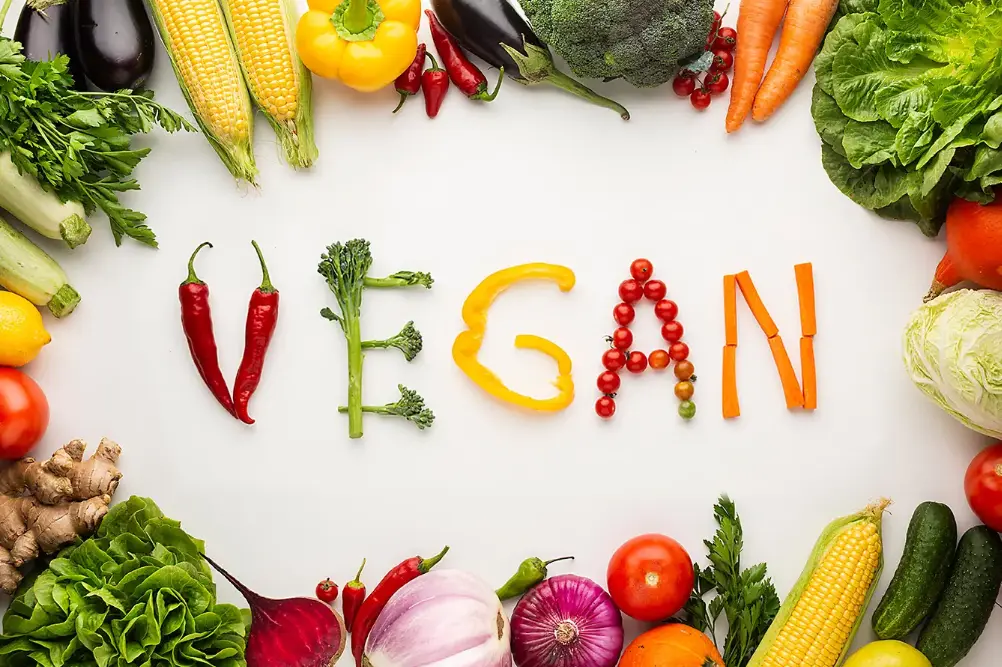Diving into the Vibrant World of Vegan Food

Why is Vegan Food Becoming Popular?
In recent years, many people across the globe have been inclined towards veganism as they are becoming aware of the environmental impact of animal agriculture including greenhouse gas emissions, deforestation, along with water pollution. This has resulted in growing adoption of veganism.
Animal diet is also associated with several health risks and diseases such as cardiovascular disorders, stroke, diabetes, obesity, gastrointestinal disorders, or even cancer due to presence of saturated fats, cholesterol, animal proteins, and other compounds present in animal-based food. Another reason for adopting of vegan lifestyle is that many individuals feel uncomfortable with the cruelty and exploitation involved in the meat and dairy industry.
Vegan food typically includes vegetables, fruits, grains, legumes, nuts and seeds to plant-based alternatives like mock meats, dairy-free cheeses, and processed vegan products. Some less popular variations in the vegan diet include raw veganism, high-barb, low-fat veganism, and gluten-free veganism, catering to specific dietary needs and preferences.
Vegan food is steadily becoming popular in many parts of the globe as people are becoming aware of its benefits and are being influenced by celebrities, athletes and social media figures who share their experiences and promote the benefits of turning vegan.
Celebrating its Diversity:
Veganism is a lifestyle and dietary choice that is characterized by the avoidance of all animal products such as meat, dairy, honey, eggs, and other byproducts derived from animals. These individuals not only prioritize vegan food but also refrain from using products like clothing, cosmetics, and household items made from animals.
It transcends cultural boundaries and is preached by people from different cultural backgrounds across the globe. Specific food and ingredients may vary in terms of cultural traditions and culinary practices, but the underlying principle remains the same.
Vegan cuisine comprises rich shades of flavors, species as well as cooking techniques spanning across America, Asia, the Middle East, Latin America, and Europe. As veganism is steadily gaining traction, the availability of global ingredients has significantly increased, allowing vegans to explore a wide range of flavors and cuisines.
Availability of Vegan Food:
In recent years, there has been a boom in the availability of vegan food options in supermarkets, restaurants, and food delivery services. From plant-based burgers, and dairy-free cheeses to vegan ice-creams and meat substitutes, there is a wide range of vegan-friendly food currently available.
Food manufacturers and retailers are focused on offering more variety of vegan alternatives to cater to the rising demand for variety of vegan food alternatives. This in return, makes it easier for people to adopt a vegan diet and enjoy delicious plant-based meals, without compromising on the taste.
Challenges Associated with Vegan Food:
Though veganism has gained popularity and recognition recently, a few challenges persist. Vegan staples like fruits, vegetables, and grains are easily available and cheaper, but vegan food especially premium vegan products and ingredients are difficult to source and are costly. Another crucial factor is that some individuals are allergic to common vegan ingredients like nuts, soy, gluten, or even certain fruits.
Eating out or attending social gatherings can be challenging for vegans as many of these events have limited vegan options or may not accommodate dietary restrictions. In addition to this, some individuals, who are less aware of the exact nutritional benefits may struggle to meet their nutritional needs like protein, iron, calcium, and omega-3 fatty acids.
Access to vegan-friendly food can be limited in certain geographic areas, especially rural areas or remote destinations. Vegan individuals visiting such places may find it difficult to find food of their choice.
Global Vegan Food Market Scenario:
The vegan food market is expected to register a rapid revenue CAGR of 10% during the forecast period. This growth can be significantly driven by rising adoption of veganism across the globe, growing concerns about environmental sustainability and climate change, and innovation in vegan food technology.
Moreover, many brands are introducing their products in supermarkets, restaurants, and online platforms and leading companies are heavily investing in R&D activities to overcome the existing drawbacks like perceived taste and texture and costs. These factors are also expected to drive global market growth during the forecast period.
Follow us on LinkedIn - https://www.linkedin.com/company/researchvise-rv/
Recent Posts
-
 Diving into the Vibrant World of Vegan Food
Diving into the Vibrant World of Vegan Food1 year ago
Categories
- ≫Automobile and Transportation
- ≫Chemicals and Materials
- ≫Consumer Goods
- ≫Energy and Power
- ≫Electronics and Semiconductor
- ≫Food and Beverages
- ≫Machinery and Equipment
- ≫Pharma and Healthcare
- ≫Service and Software
- ≫Others
- ≫Packaging
- ≫ICT
- ≫Technology
- ≫Medical Devices and Consumables
- ≫Agriculture
- ≫Medical Care
- ≫Aerospace and Defense



